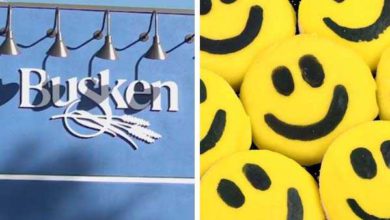
Cincinnati hand surgeon Mohab Foad performed surgery Thursday on his own hand.
He hadn't planned to participate. He was the patient. In an operating room at Beacon Orthopedics and Sports Medicine practice in Sharonville, he gowned up, stepped to the surgical table and draped his numbed left hand over a rolled-up towel. Across from him, his Beacon partner, Dr. Sam B. Koo, drew a short black line in ink near Foad's left thumb.
At 5:08 p.m., Koo pressed the tip of a scalpel to that line, and Foad closed his eyes, but then, "It really was a lot like it wasn't my thumb, it was anybody else's." Foad opened his eyes, asked for a knife and got to work.

Foad, pronounced foe-ADD, is a Cincinnati native and a graduate of the University of Cincinnati College of Medicine. He has practiced at Beacon for 11 years. On a typical day, he operates on hands 10 or 12 times. He's repaired hundreds of ulnar collateral ligaments.
On July 25, Foad and his oldest son Harris were on a paintball outing in West Chester Township when Foad lost his balance, and his left hand shot out to the ground to stop the fall. He got back up, felt fine and went on with the paintball game.
But the next day, “I could tell it wasn’t right. I was pretty sure I tore a ligament in the thumb.” Three days later, magnetic resonance imaging confirmed his guess. The ulnar collateral ligament helps you pull open a bag of microwave popcorn. A tear at that site is common enough for nicknames like “skier’s thumb” and “gamekeeper’s thumb.”
The choice: surgery, or no surgery. “Not every injury like this needs to be treated by surgery,” Foad said. “All day long, I’m trying to convince people they don’t need surgery.”

Foad sent his imaging to friends from his surgical training for their thoughts. “One of them pointed out to me, and this may sound arrogant, ‘The community needs healthy doctors. You need to be healthy yourself to take care of them.’ That’s something I hadn’t really thought about.”

He considered doing the operation with only his physician's assistant, Ryan Elser; “not that I don’t trust my colleagues, we're just stubborn like that.” Surgeons performing surgery on themselves is rare but not unheard of. In April 1961, a Russian surgeon stationed with a research team in Antarctica removed his own appendix. The American Academy of Orthopaedic Surgeons does not have any policy or guidance for surgeons operating on themselves, said spokeswoman Deanna Killackey.
But Foad’s wife Susan was thumbs down on self-surgery. So Foad asked Koo to do it, and they picked Thursday. Until then, Foad went ahead with his own surgery schedule, telling patients ahead of time that he was injured but not incapacitated, since he is right-handed. "Mostly what I heard from them was concern, 'Are you OK?' "

Foad invited a reporter and photographer from The Enquirer to watch the procedure. He did 10 operations Thursday, and at 4:30 p.m., as Koo fought rush-hour traffic from Kentucky, Foad administered a local anesthetic to his left hand. Half an hour later, Koo was ready. Scrub technician Tonya Thompson had arranged clamps and retractors for the surgery.
Foad injected more anesthesia into his left hand, and he joined Koo at the table. After the initial incision, Koo "asked me, 'How do you like to do this part?' and I would show him, 'and this is how I like to put this stitch.' "

Once Koo hit bone, Foad set up the anchor, and Koo used a drill to set it, Koo and Foad sutured the ligament back into place. Koo closed the incision, and Foad spread a bead of surgical glue over the freshly closed wound. The procedure took 41 minutes. As a nurse applied a dressing, Foad used his right hand to toggle the microphone of his headset, “It went well.” Koo was smiling under his surgical mask. "Never seen that before. Dr. Foad is a good surgeon."
The prognosis is good, although Foad will not be doing surgery for at least a few weeks. Overnight, he iced his hand and took nothing stronger than over-the-counter drugs. He worked Friday to consult with patients, but, "I didn't do anything with that hand, and I have not had one lick of pain."
The surgery gave the surgeon a lesson. People do almost anything to avoid pain, yet, "Pain is a tool."
"I wonder now: Should I guide people to slow down more? Because people just want to go, go, go, and don't want to be held back. I tend to feed into that," Foad said. "Maybe this is part of it. Maybe giving yourself a chance to rest and heal a little is good."
Source link








